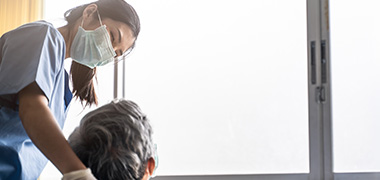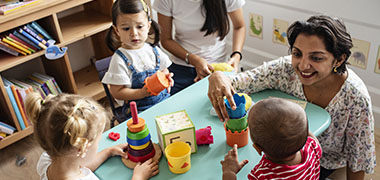
This role has a moderate level of AI exposure. AI can enhance efficiency for some tasks, but this job still relies on human skills and decision-making.
Explore all careersPaediatric Nurses specialise in caring for children and adolescents, providing support in hospitals and community health settings.
Get qualified to work as a Paediatric Nurse with a course recognised across Australia. Speak to a training provider to learn more.
Browse occupations related to Paediatric Nurse
The average salary for registered Paediatric Nurses in Australia is $1,441 per week ($74,932 per annum), this includes Paediatric Nurses. Increase your earning capacity by undertaking post-graduate qualifications in paediatric nursing, family health, and community services.
 Courses.com.au Team
Courses.com.au Team
There are 325,500 Registered Nurses (RNs) currently working in Australia, this includes Paediatric Nurses. There is a growing demand for all types of qualified nurses in every part of Australia, with thousands of new jobs expected over the next 3-5 years.
 Courses.com.au Team
Courses.com.au Team
To become a Paediatric Nurse you must complete a Bachelor of Nursing, then apply for registration with the Nursing and Midwifery Board of Australia. Once you are a qualified Registered Nurse (RN) you should complete a post-graduate qualification in paediatrics. The Graduate Certificate in Nursing (Paediatric & Adolescent Nursing), Graduate Certificate in Nursing Practice (Paediatric Intensive Care), Graduate Certificate in Paediatric Nursing Studies, or the Graduate Diploma in Child and Family Health Nursing are all excellent choices.
Source: Australian Government Labour Market Insights 2023
 Courses.com.au Team
Courses.com.au Team



Paediatric Nurses are qualified nurses who specialise in the nursing support and care of children and adolescents. They hold post-graduate qualifications in paediatric nursing and may work for children’s hospitals, community health centres, family health clinics, indigenous communities, non-profits and government agencies.
As a Paediatric Nurse you could be administering immunisations to young children for mumps and measles, changing the dressings on a young burns victim, monitoring the condition of a child who has had a fall, sitting with a hospitalised child who is distressed, answering the questions of a young teen about contraception, checking patient records, or changing an IV drip.